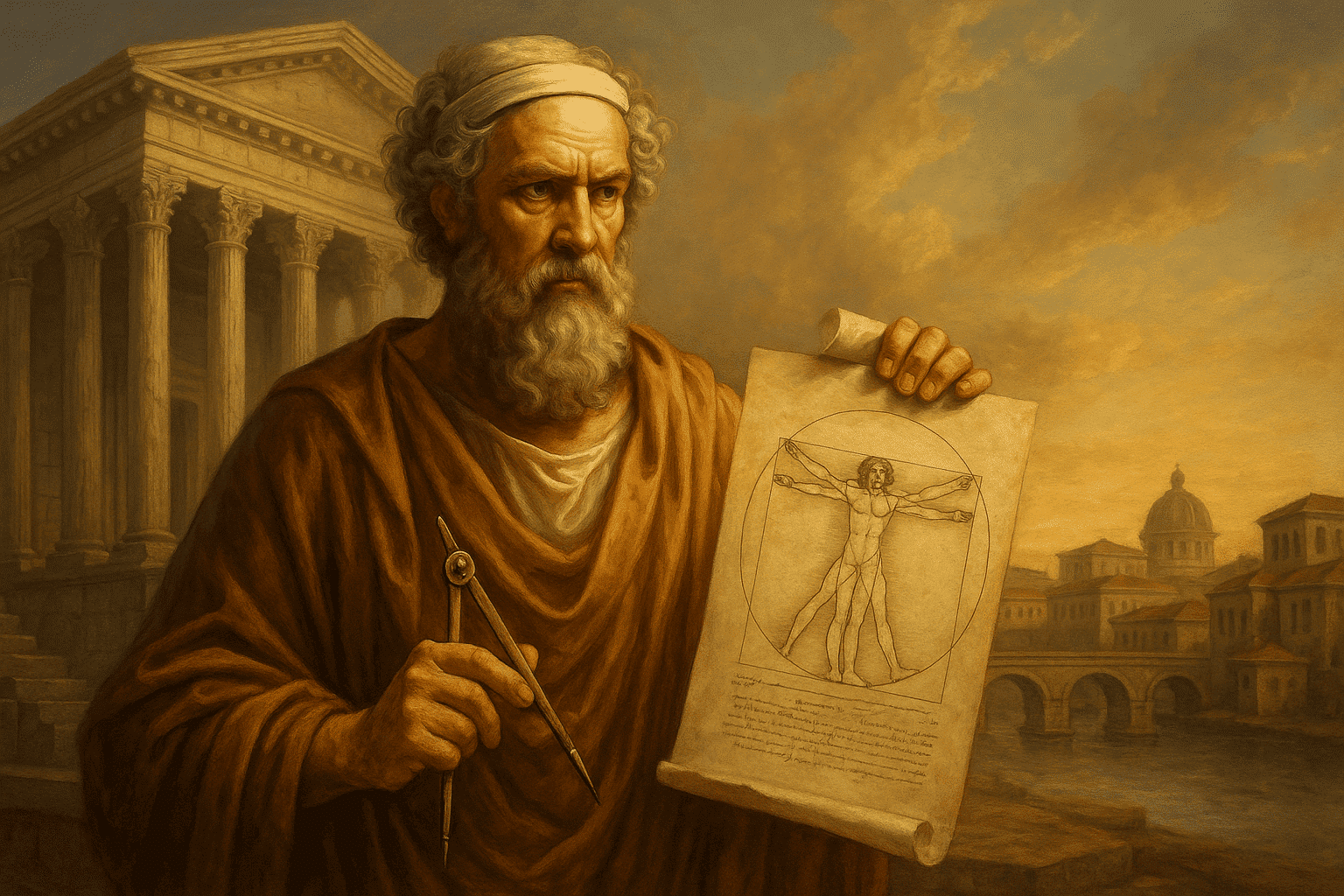How Roman Engineer Vitruvius Still Shapes the Way We Build
Source: GreekReporter.com

Although most Roman engineers are often overlooked in history and lost to time, Vitruvius is a figure who stands out. Two thousand years ago, this man wrote a guide to architecture that left an indelible mark on the history of architecture.
It was so insightful and revolutionary that architects today are still borrowing his ideas. While his main patron, Augustus, was busy building his empire, Marcus Vitruvius Pollio was creating the secrets to buildings that could last for millennia and also look beautiful while doing it.
His book, De architectura, was a masterpiece that, after being rediscovered in a monastery in 1414, completely changed the way the Renaissance was shaped, so much so that it continues to influence the very spaces we live and work in today.
Why is Vitruvius’s work so important?
So, what was the big secret that made Vitruvius such an influential figure? It wasn’t just about the way he built. Vitruvius’s real genius was an idea that sounds incredibly simple but is exceptionally hard to achieve. He insisted every single structure must have three qualities: strength, utility, and beauty. Firmitas meant it had to be tough and built to withstand the elements. Utilitas meant it had to work for the people inside it; there’s no point in a beautiful house if the layout is a nightmare. But the final piece, venustas, was the soul.
It had to be beautiful, with a sense of proportion and grace that he linked to the perfection of the human body—the very idea that inspired Leonardo da Vinci’s famous Vitruvian Man. It’s this powerful trio—the balance of engineering, function, and art—that makes his work timeless and Roman architecture so great.

It would be tempting to think that all of this applies to ancient temples and grand villas, but nowhere else. However, that would be wrong. Architects like Andrea Palladio were inspired by Vitruvius’s work. His Palladian designs inspired countless buildings, even the White House, the heart of American political power.
But the influence of Vitruvius lingers in far more modern places. When you hear architects today talking about ‘green design’ or ‘sustainable architecture’, what they’re doing is chasing that same balance he introduced and championed.
They are using durable, local materials (strength), designing for energy efficiency (utility), and trying to create something that sits harmoniously in its landscape (beauty). His DNA is in everything from a cutting-edge skyscraper to the intuitive design of the phone in your pocket. It’s all about making things that are strong, useful, and feel just right.
Who was Vitruvius?
Regarding Vitruvius, there are few personal details about him beyond what he included in his writings, which cover topics from basilicas to war machines. His enduring contribution is the remarkable intellectual framework he provided for future generations, which continues to inspire us today. He argued that an architect couldn’t just be an artist or a builder; they had to be a bit of everything—a scientist, a philosopher, a student of nature and people.
In our age of hyper-specialisation, that call for a well-rounded, holistic approach feels more important than ever. He knew that buildings are the silent partners in our lives, the very places where we spend the vast majority of our lives.
When you stop and think about it, the ideas of Vitruvius are all around us, written in stone and steel. He posed the fundamental questions that every designer still asks today. How do we build something that lasts? How do we make it work for people? And how do we make it touch the human spirit, creating livable cities rather than concrete jungles?
Vitruvius had the answers.
The original article: belongs to GreekReporter.com .
